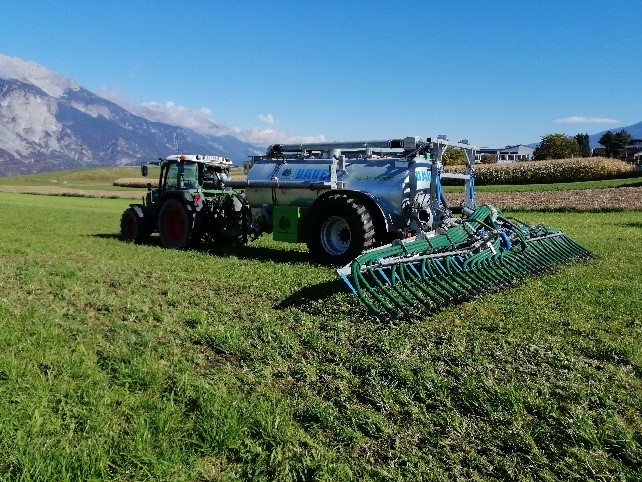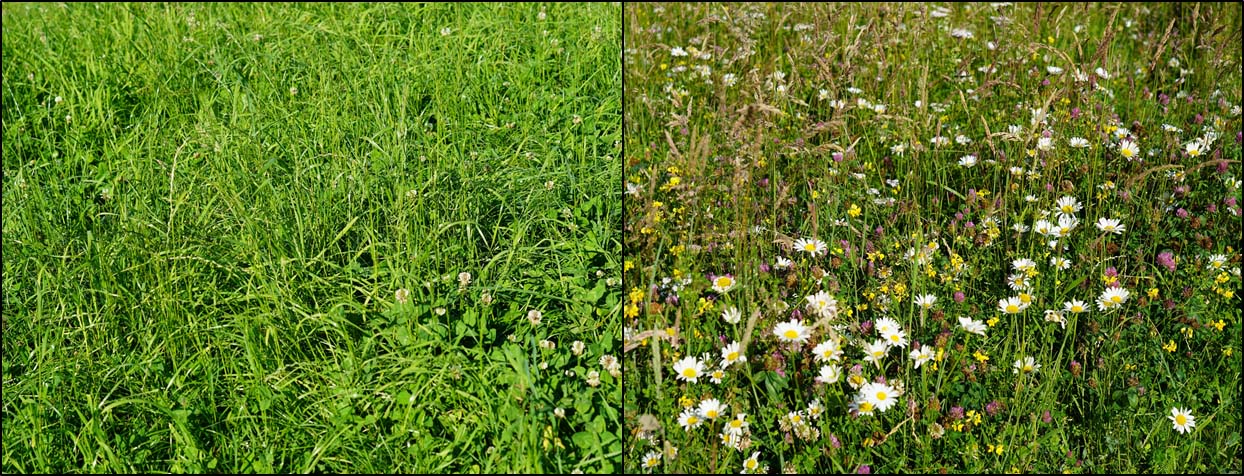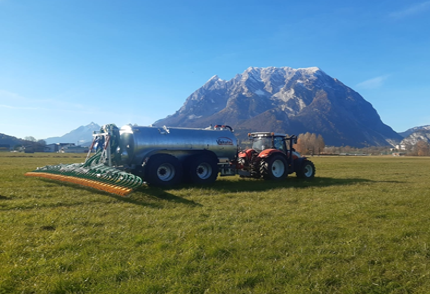Similar to the climatic conditions and topography, the management of Austrian grassland is also very heterogeneous and ranges from intensive multi-cut meadows to extensive pastures, single-mown meadows, alpine pastures and mountain meadows.
According to the concept of site-adapted grassland management, the possible intensity of management depends largely on the location. An evaluation of the dry matter and energy yields depending on the soil climate number shows the major influence of the location on yield and feed quality. On very good permanent meadow locations, a good 10 tons of dry matter yield per hectare can be expected, whereas on poorer locations this value shrinks to half. The feed quality in the form of energy, digestibility and crude protein content is also significantly higher in the favored areas than in the disadvantaged areas.
 Figure 1: Manure contains valuable nutrients and ensures optimal growth
Figure 1: Manure contains valuable nutrients and ensures optimal growth
This high variability in yield and feed quality is also accompanied by very different nutrient withdrawals and must therefore be taken into account when fertilizing. A large part of the Austrian grassland is fertilized with so-called commercial fertilizers, including manure, manure, liquid manure and compost. In the sense of site-adapted management, not only legal requirements for fertilization are adhered to, but also the production conditions such as location, climate and plant population are taken into account to a large extent.
The plant population is also significantly influenced by the location, the intensity of cultivation and fertilization. Commercial grassland, i.e. grassland areas that are used three or more times per year, usually has a higher proportion of grasses and a lower proportion of herbs. Frequent and early use, with the aim of achieving high forage quality, leads over time to a reduction in grassland species that rely on natural seeding. For this reason, high-quality seeds must be sown on these areas from time to time with the desired crop partners. These areas represent the central production basis for livestock farms to produce high-quality milk and meat products. The extensive grassland areas with up to two uses per year are among the most species-rich habitats in Austria and are particularly worth protecting. However, due to constant intensification and the abandonment of use in difficult locations, these areas are increasingly coming under pressure. Special support measures and compensation payments, which are being developed in cooperation with the HBLFA Raumberg-Gumpenstein, are intended to counteract these trends.
 Figure 2: Multi-mown commercial grassland (left) delivers high feed yields with the best quality; Extensively used grassland (right) is one of the most valuable biodiversity areas
Figure 2: Multi-mown commercial grassland (left) delivers high feed yields with the best quality; Extensively used grassland (right) is one of the most valuable biodiversity areas
In contrast to other site characteristics, grassland places high demands on water supply and is one of the water-requiring cultures. Drought periods that are becoming more and more frequent are severely limiting the productivity of grassland stands. Numerous crop cultivation experiments at the HBLFA Raumberg-Gumpenstein are dedicated to this topic and aim to ensure yields, forage quality and floristic diversity and thus an attractive cultural landscape even under future climatic conditions.








